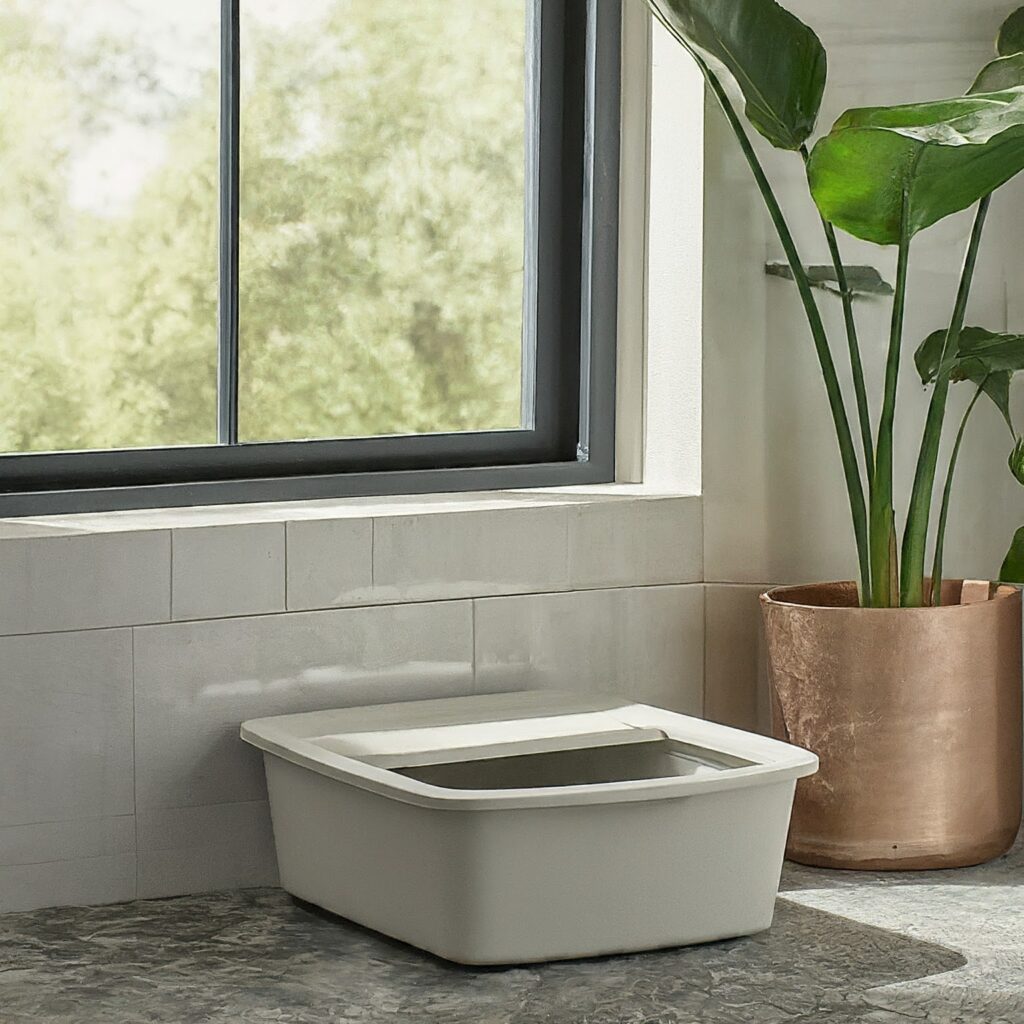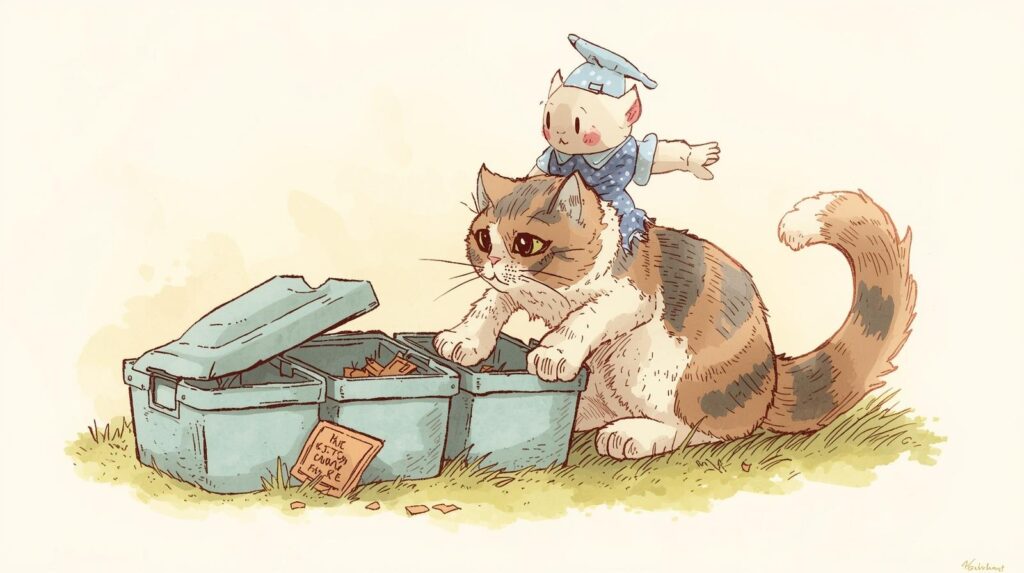When a cat starts peeing outside or over the edge of its litter box, it can be frustrating for owners. But most of the time, the behavior has an underlying cause. Here are the most common reasons:
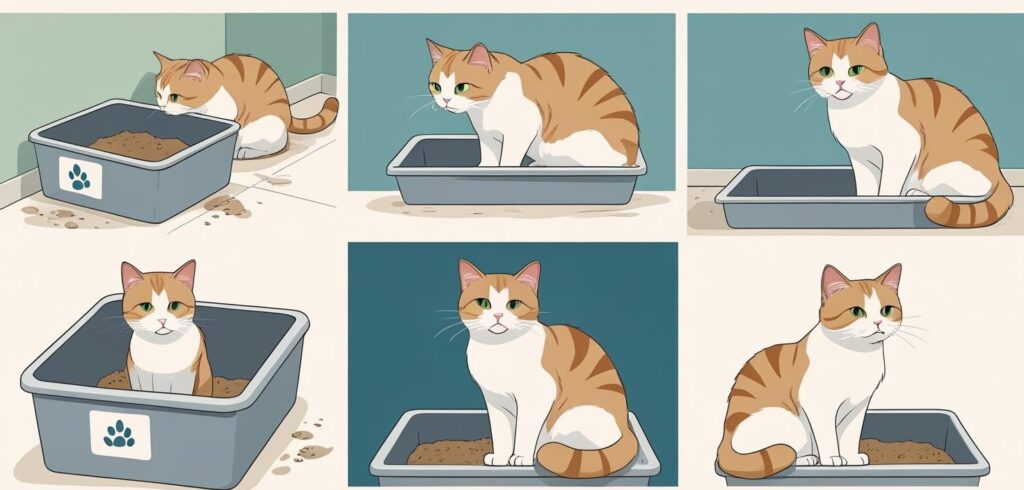
1. Medical Issues
Cats that suddenly change their litter box habits might be dealing with health problems. Conditions like urinary tract infections (UTIs), bladder inflammation, or kidney disease can make urination uncomfortable. If peeing becomes painful, cats sometimes avoid their usual spot or change positions inside the box. In older cats, arthritis is another reason—they may struggle to squat properly.
2. Litter Box Problems
Sometimes, the litter box itself is the culprit. If the box is too small, too shallow, or has low sides, a cat might unintentionally aim too high. A box that isn’t cleaned regularly can also cause avoidance behavior. Cats are naturally clean animals, and if they think the box is dirty, they may pee on the side or even outside the box.
3. Behavioral Triggers
Stress, anxiety, or changes in the environment can also lead to this issue. A new pet, a move, or even loud noises can stress out a cat, causing litter box mishaps. In multi-cat households, competition over litter boxes often creates similar problems.
Why Does My Cat Pee on the Edge or Inside Wall of the Litter Box?
When a cat urinates on the inside wall or perches on the edge of the box, it’s often related to their posture. Some cats adopt a standing or half-squatting position, which can make urine hit the sides instead of the litter.
Common Reasons for Edge Peeing:
- Comfort and Balance: Cats might perch because they dislike touching the litter or feel the box is too small.
- High Aiming: Certain cats, especially males, tend to spray higher when marking territory—even in a litter box.
- Medical Concerns: Joint pain or arthritis can make squatting difficult, leading to a more upright position.
- Litter box issue: Sometimes it may be an issue with the litter box, the litter box is smelly, or there are maggots
A quick solution for this is to switch to a high-sided litter box or a top-entry design. These prevent urine from spilling out and help contain the mess without stressing the cat.
Male vs. Female Cat Behavior – Why They Pee Over the Side
When it comes to litter box habits, male and female cats can show different behaviors. Understanding these differences can help solve the problem effectively.
Male Cat Peeing Over the Side of the Litter Box
Male cats are more likely to spray or aim higher due to their instincts. This often happens with intact males (not neutered), but even neutered males can show this behavior. Common reasons include:
- Territorial marking: Especially in multi-cat homes.
- High squatting: Some males don’t crouch low enough, causing urine to hit the box wall or go over the edge.
- Box size: Larger male cats need bigger boxes to feel comfortable.
Solution: Choose a high-sided litter box or a covered one. Also, if the male cat is intact, neutering often reduces spraying behavior.
Female Cat Peeing Over the Side of the Litter Box
While less common, female cats can also pee on the edge or over the box. This usually points to:
- Small or shallow box: Females also appreciate space.
- Discomfort or pain: Arthritis or urinary issues can make them avoid squatting fully.
- Stress-related habits: Environmental changes or dirty boxes can trigger this.
Solution: Provide a spacious, clean box and ensure regular vet check-ups to rule out health problems.
Special Case – Old Cat Peeing Over the Side
Older cats often face mobility issues, making it hard to use the litter box properly. Arthritis, hip problems, and general weakness can cause them to:
- Stand instead of squat.
- Miss the target due to reduced balance.
How to Help Senior Cats:
- Use low-entry litter boxes with high sides.
- Add rugs or mats around the box to catch spills.
- Keep the box in an easily accessible, quiet location.
If an old cat suddenly changes its bathroom habits, a vet visit is essential to rule out kidney disease, diabetes, or arthritis flare-ups.
Cat Perches on the Edge of the Litter Box
Many cats perch on the edge of the litter box instead of stepping inside completely. While it may seem harmless, this habit often leads to urine overshooting the box.
Why Do Cats Perch?
- Cleanliness Concerns: Cats dislike stepping into a dirty litter box. If the litter isn’t cleaned regularly or there is a mold in litter, they’ll balance on the edge to avoid contact.
- Litter Texture Issues: Some cats dislike the feel of certain litter types on their paws.
- Box Size: A box that feels too small or cramped makes perching more likely.
- Behavioral Habits: Some cats simply develop this as a routine, especially if they were not introduced to proper litter habits early.
Solutions for Perching Cats
- Use larger litter boxes with plenty of space.
- Opt for high-sided litter boxes or covered designs to keep urine inside.
- Scoop the litter daily and replace it frequently to maintain cleanliness.
How to Stop a Cat from Peeing Over or Beside the Litter Box
Dealing with this problem requires patience and practical changes. Here are the best ways to stop it:
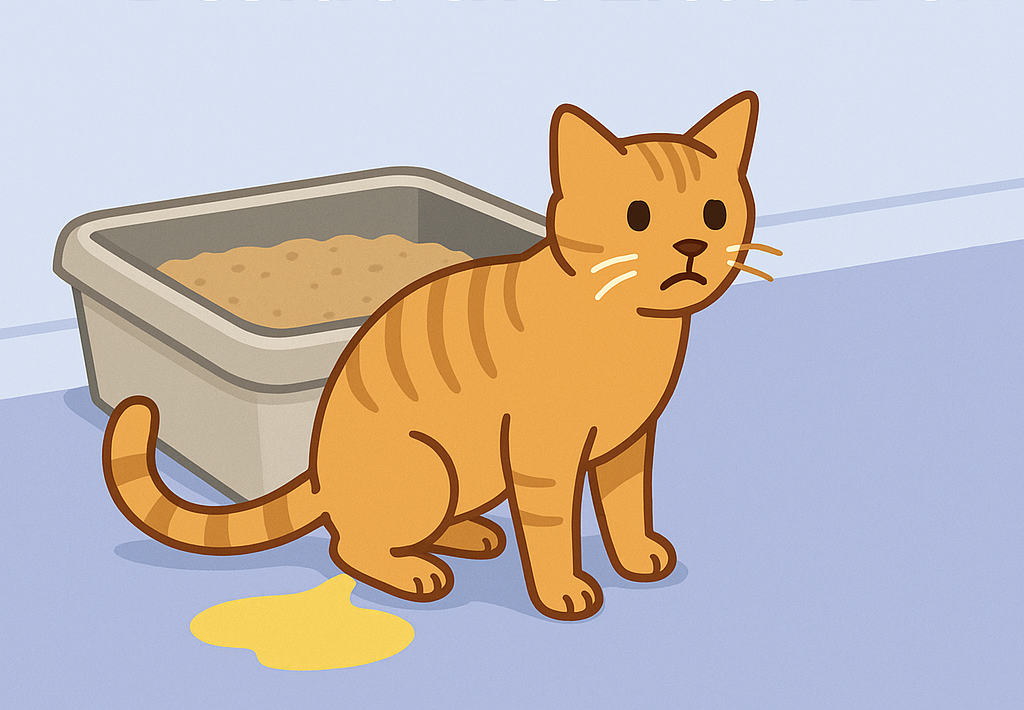
1. Upgrade the Litter Box
- Choose a high-sided litter box or a top-entry model to contain spills.
- For older cats, select a box with one low side for easy entry but higher walls elsewhere.
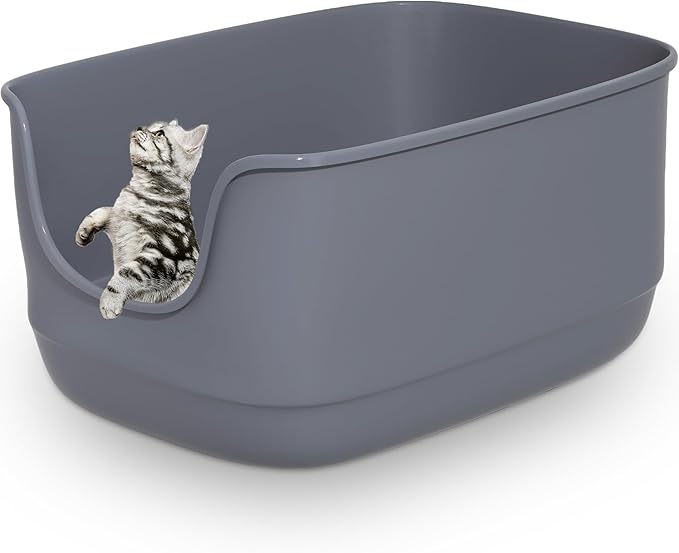
2. Keep It Clean
- Scoop at least once a day.
- Wash the box weekly with mild soap and water.
- Avoid strong chemicals that may deter your cat.
3. Choose the Right Location
- Place the box in a quiet, low-traffic area.
- Avoid putting it near food or water bowls.
4. Try Different Litter Types
- Some cats dislike certain textures or scents.
- Experiment with unscented, clumping litter for best results.
- Here are top 10 best litters you can try one
5. Reduce Stress
- Provide multiple boxes in multi-cat homes.
- Use pheromone sprays or diffusers to calm anxious cats.
6. Visit the Vet
If your cat suddenly changes its litter box habits, rule out medical issues like UTIs or arthritis.
Preventive Tips to Avoid Litter Box Mishaps
Preventing your cat from peeing over the side or beside the box is much easier than fixing the problem after it starts. Here are some practical tips:
1. Choose the Right Litter Box
- Opt for a large, high-sided box or top-entry design to prevent overflow.
- In multi-cat households, use one box per cat plus one extra.
2. Maintain Cleanliness
- Scoop waste daily and replace litter regularly.
- Wash the litter box weekly to prevent odor buildup.
3. Monitor Your Cat’s Health
- Regular vet check-ups can catch conditions like UTIs, kidney issues, or arthritis early.
- Pay attention to sudden changes in bathroom habits.
4. Create a Comfortable Environment
- Place boxes in quiet, easily accessible areas.
- Avoid sudden changes in litter type or box location.
5. Address Stress and Behavioral Factors
- Use calming aids like pheromone diffusers.
- Provide scratching posts, toys, and hiding spots to reduce anxiety.
Conclusion
Cats peeing over the side of the litter box can be frustrating, but it’s usually solvable. In most cases, the cause is a mix of box design, cleanliness, or stress. Medical issues like UTIs or arthritis should never be overlooked, especially if this behavior starts suddenly.
By understanding your cat’s needs and making small adjustments—like upgrading the litter box, improving hygiene, or offering more space—you can prevent accidents and keep both your home and your feline friend happy.
FAQs
1. Why does my cat pee beside the litter box?
Cats usually pee beside the box due to stress, dirty litter, or medical issues like urinary infections. Sometimes, the litter box location or size also plays a role.
2. Why does my cat pee on the inside wall of the litter box?
This happens when cats stand or partially squat instead of sitting low. Older cats with arthritis or cats that dislike the litter texture often show this behavior.
3. How do I stop my cat from peeing on the side of the litter box?
Upgrade to a high-sided or top-entry box, keep the box clean, and ensure the right size. If it’s a sudden change, consult a vet to rule out health problems.
4. Is it normal for a cat to perch on the edge of the litter box?
Yes, some cats perch to avoid dirty litter or because the box feels too small. To fix this, provide a larger, clean litter box.

